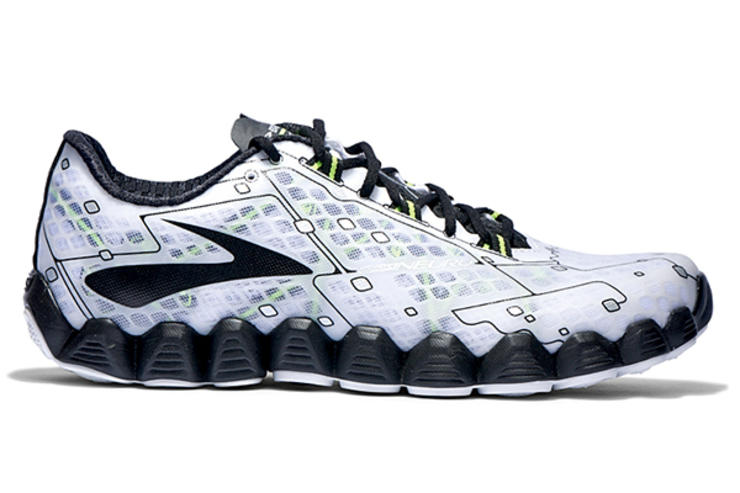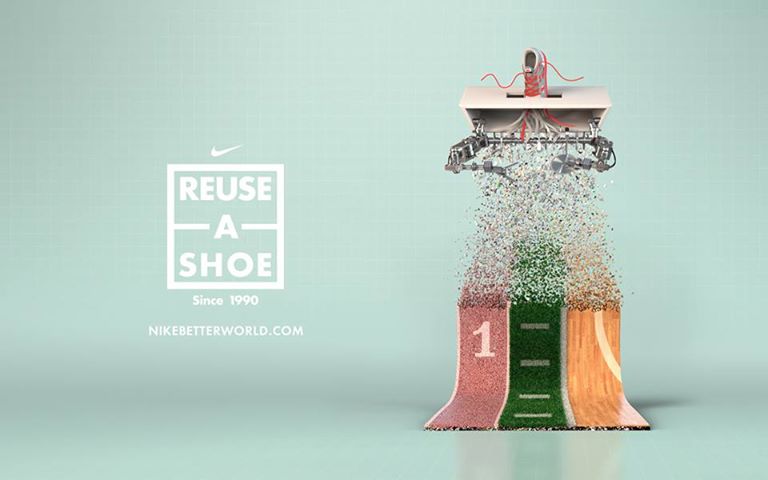At UrbanMeisters we have been having a lot of conversation around ecofashion & sustainability. After all it’s one of the biggest, thriving industry with its motifs omnipresent – from style bloggers, trend updates to products. On another note, you also know that one of our first series of article was around outdoor running and it’s safety owing to outdoor pollution (read here).
Recently when I was gearing up for my morning run at my favorite spot in Paris, it suddenly stuck me – is there a way to make my outdooor running more sustainable. Yes we are all concerned about the impact of the outdoor air on us (read here). But what about our impact on the outdoors? Our footprint? What about sneakers (not to mention they are all the fashion craze world over… even Anna Dello Russo is finally wearing sneakers!)? Are there ethical sneakers out there that we can choose?
Sneak peek into sneaker making
This got me researching. Running is seen as a “green” sport because it is light on equipment, connects one with nature & is low impact. But as I started researching I discovered that this is not true. To begin with just like fashion, the sportswear apparel industry faces the same challenges.
A new pair of synthetic running shoes typically generates 13 kgs of CO2 emissions, according to a team of MIT scientist (source). By itself it’s may not seem like a high number, but when you consider that the product that does not use electricity, or require multiple components, it’s an unusually high carbon footprint equivalent to leaving a 100-watt bulb burning for an entire week. Now multiply this with million runners world-wide and the billions of sneakers produced every year. Clearly there’s a significant impact. The apparel industry accounts for 10% of global carbon emissions and remains the second largest industrial polluter, coming second after oil. More than two-thirds (68%) of the greenhouse gas emissions generated by the shoes tested by the MIT researchers came from the manufacturing process – not in sourcing the materials or in their actual use. This sort of emission in manufacturing is relatable to the carbon footprint in hi-tech or specialised products, such as integrated circuits.
Like with fashion (we explained here), the problem lies at every step of the product – from raw materials to retail store. Most sneakers used to be made from PVC (polyvinyl chloride is toxic to workers and known to form carcinogenic dioxin). While most brands have moved away from PVC to sophisticated polymers, these polymers are still plastics. In between all this, there’s a lot of wastage too since the shoes are cut into moulds leaving a lot of waste materials. Besides plastics, the sneaker industry uses crude oil extensively (petrochemicals are used to make many synthetic parts of the sneaker). As we all know, oil is not a sustainable resource.
Then the whole manufacturing process is another problem. Most brands have their manufacturing facilities in China, where coal is the primary source of powering factories and machines, and is also typically used to generate steam or run other processes in the plant itself, making manufacturing clearly non-sustainable.
Then in the product assembly stage, with sneakers especially, there are multiple parts like uppers, mid-soles, outsoles etc which are stuck together with adhesives. These glues too are toxic, seep from factories into air as well as soil and water polluting these with toxic leftover chemicals. And not to mention, even with the finished product continue to emit VOCs like benzene & toulene. (Read a report NYTIMES published in 2000)
Post the manufacturing stage, there’s the whole retail phase. With the holy trinity of Nike, Adidas & Puma being omnipresent consider the impact that there huge temple-like stores have. Just the fancy lighting in these stores consumes huge amount of energy.
And lastly, once you are done using the sneakers, considering most of them are made of hybrid plastic polymers, running shoes can take up to a thousand years to biodegrade in a landfill (source). Materials like EVA (ethylene vinyl acetate) which are used extensively by most brands in the mid-sole can take upto 1000 years to biodegrade. And even when it is thermally degraded it releases huge amounts of toxic VOC fumes in landfills.
Time to hang up those sneakers? No!
While there’s clearly an impact on the environment, with mounting pressure on industry & brands, there’s been a lot of green innovation and brands that are working on greener alternatives. The Holy Trinity with great pressure too has been making some serious changes. Nike and Adidas have both been constantly challenged on both their environmental impact as well as labour practices. In response, over the years both giants have worked on their policies & products. With ardent fans in both camps, the team at UrbanMeisters erupted into a debate on which of the two brands is greener (or again is it just marketing gimmick & greenwashing?)

While Nike introduced Flykint to increase its green footprint, Adidas also has the Primeknit range to match. Nike’s Flyknit was a great move which reduced wastage significantly because, as opposed to multiple soles & upper layers, their is just one knit upper that is stuck to the sole. FlyKnit technology has reduced Nike’s environmental footprint by some 3.5 million pounds of waste (source). While in it’s sustainability report Nike breaks down materials that it uses, Adidas works primarily with Cotton & leather but outperforms Nike in use of with Organic cotton (Source). Even Primeknit from Adidas reduces wastage (source). « The Primeknit construction uses the latest design tools and a seamless engineering construction that allows us to digitally knit the entire upper in one continuous piece, » says James Carnes, global creative director for sport performance design at Adidas. « Traditionally, sports shoes are built from several different pieces, which can mean excess material. »
Adidas is now working and has already released a prototype of its famous Boost made entirely from Ocean trash in partnership with with Parley for the Oceans group (read here). In their latest sustainability report, by 2025 Nike aims to move to clean energy sources to its manufacturing process. So while its great to see all these giants getting their green act together, which shoe is our favorite pick?
UrbanMeisters selects their favorite brand!
Besides green concern, from pronation to style, to track running or trail running, there’s so much that goes into selecting a sneaker. So in this sea of sneakers which one should be your go-to brand?
While there are brands like Newton Running – the first running shoe company awarded B Corp status‚ (award given to companies that use the power of business to solve social and environmental problems) we are in love with Brooks Running.
With modest marketing budgets, Brooks green efforts are less known but nevertheless the company has put in a lot of effort to get ahead in the green race.
- Holistic approach: From its products’ environmental impact to packaging, reducing non-renewable materials, extending durability and optimizing end-of-life outcomes, Brooks has a very holistic, complete & transparent approach including social & environmental concerns. Writer Florence Williams from Runners World took a tour of Brooks midsole manufacturing facility and has a very in-depth process by process report that she shared. Read it here.
- Product design & materials: Many models of Brooks shoes have High Performance Rubber Green (HPR Green) outsoles, made with sand rather than petroleum. From laces, shoe and apparel fabrics, hangtags and packaging, recycled materials are used everywhere possible. The company seeks suppliers with bluesign certification, governing environmental practices in textile manufacturing. They specially use bluesign certified printers for apparel printing to reduce the exposure to harmful VOCs.
- In 2008, Brooks introduced the biodegradable BioMoGo midsole, used in almost all of its shoes. An additive in the foam allows anaerobic microbes to eat the material once it hits a biologically active landfill, breaking it into nontoxic byproducts in 20 years (versus 1,000 years for a standard EVA midsole). And Brooks has gone opensource by putting the BioMoGo additive technology into the public domain to encourage more companies to adopt it – a clear commitment to seeing & solving sustainability than just improving its own green cred.
- Overall footprint: In 2014, the company moved to its new head quarters in Seattle, where again the building is focused on being green and reducing energy consumption by 75%. Besides this the company is is working & funding many environmental & workforce related initiatives. For a detailed report, read here
Planning to buy Brooks?
Brooks while an American company is available worldwide. And runners world-wide are well-aware of this brand. However if you haven’t heard of them before, Brooks is very renowned for its running shoes. Year after year, their sneaker models earn a spot in Top 10 selection by runners, blogs, running forums including Runner’s World report of best 2016 running shoes (check here). I personally am a big fan of their Cascadia model which works well for my foot. Brooks is as high performance as some of the leading brands and are also worn by athletes (see here).
Lastly if you are wondering about the style quotient, you just need to take a look at their products and you will love them. Besides this Brooks has a huge range of running shoe models to not only suit every foot movement need, but also your kind of running. So whether you love track running, trail running, long distance, there’s a perfect high-performance model for you. From cushioning to ultra light-weight sneakers, find reviews about their top models here.
Price? Every bit on par with all your favorite models, the shoes range from $100-$120. Widely available on Amazon to their own site, take a look at their shoes here
Throwing out your old sneakers
Not just selecting, but how we dispose sneakers can also be a responsible act. Besides donating, try Nike’s Reuse-A-Shoe program. Your old running shoes twill be recycled to Nike Grind and make athletic turfs and playground surfaces!
Lastly dear runners, let’s ensure in small ways to not disturb the lovely open door environments we run in with any plastic trash. By the end of my research, I was happy to know that there are so many brands in sports apparel that are making serious green effort. I really do hope that the fashion industry takes some note and green concerns become a trend here-to-stay. Do share with us if you want to highlight some specific brand you know of.
Watch out for our next article in this series tomorrow that focuses on the apparel you can choose to make your run greener! We’ll be happy to have your inputs 🙂
We thank Adidas for the cool picture of the runner, rest is by UrbanMeisters.




![[ALERTE GREENWASHING – CHAMBRE ENFANT] Les conseils pratiques d’un père engagé](http://urbanmeisters.com/wp-content/uploads/bfi_thumb/dummy-transparent-pyhloyclal4p5ty8tb4matytlyd4xyugzcd2z17fr6.png)